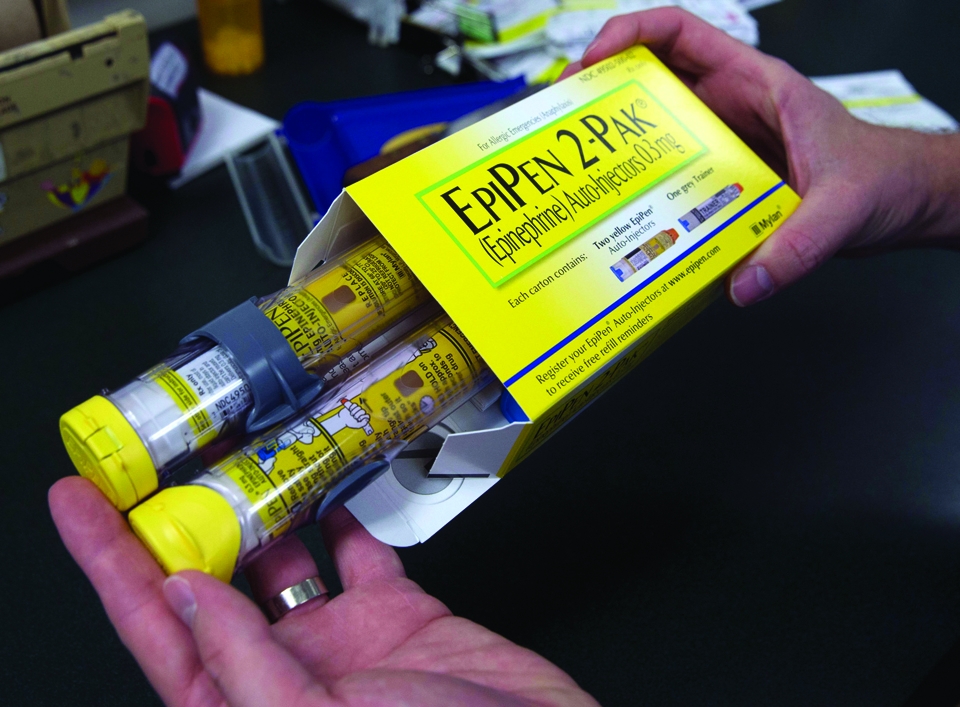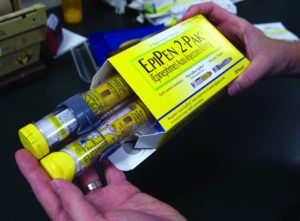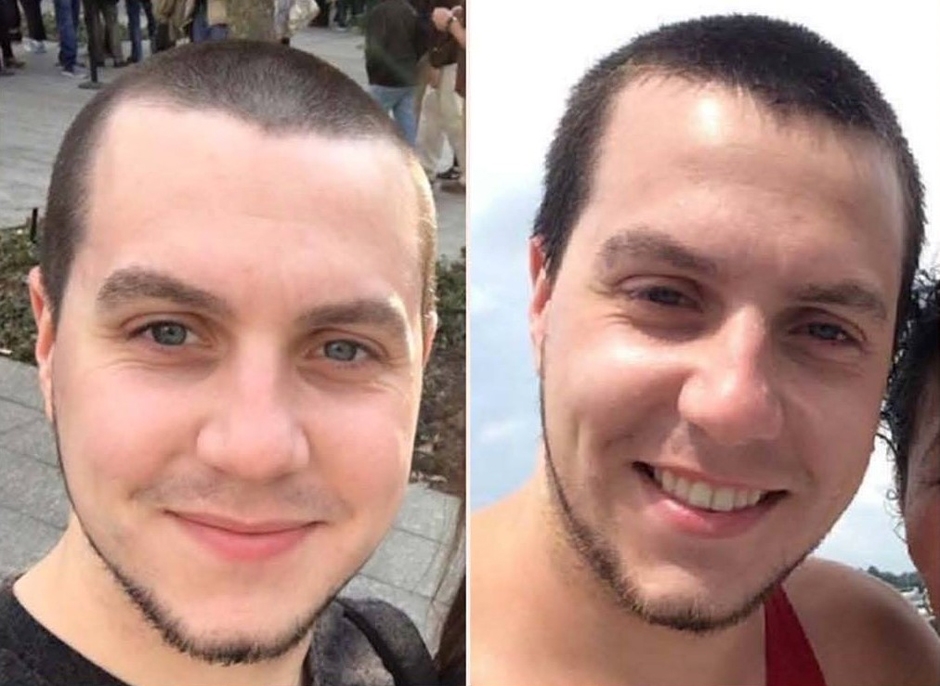

By: Leah Devorak | Layout Editor
This is an editorial piece, and the views of the writer in no way reflect the views of The Duquesne Duke, its staff, or Duquesne University.
I am one of millions across the United States who owes her life to a tiny shot of adrenaline she carries around inside her purse.
It was two days before Christmas, and I really wanted a cookie – obviously. So I opened the freezer, grabbed a beautiful chocolate one and started eating. Two delicious bites in, and every single orifice in my face started itching like it had never itched before, something I hadn’t felt since my first allergic reaction when I was three years old.
I looked down at what was in my hand, and low and behold, I saw a cookie with walnuts in it. That’s when I knew I was going into anaphylactic shock, just like the doctors said would happen if I ever ate tree nuts again.
Anaphylactic shock, however, isn’t just one giant, incredible itch on every internal surface of your body, as horrifying as that is. Anaphylaxis usually ends up with airways swelling shut, killing the person suffering from the allergic reaction unless immediate medical attention is administered.
Now as I’m sure you can guess, this is where that tiny shot of adrenaline I mentioned earlier comes into play. Called an EpiPen, it’s Mylan’s genius, portable medical device designed to stop anaphylactic shock in its tracks. Without it, I could have been dead at 18, all thanks to some stupid walnuts in some stupid Christmas cookie. But instead, I was saved, by the grace of a giant injection.
Others, however, have not been so lucky.
My family has always had health insurance, which means I have always had fairly easy, unrestricted access to EpiPens no matter their price. When I was young, though, I remember seeing the story of a girl on the news who died because her boyfriend ate a peanut butter sandwich before their date and proceeded to kiss her. She went into anaphylactic shock and died because she didn’t have an EpiPen, due to the prices being too high.
This, of course, was before 2007 when Mylan, the current maker of EpiPen, purchased the drug’s patent from Merck, meaning that the girl’s unfortunate passing wasn’t Mylan’s fault.
But Mylan could be at fault for many more deaths like that thanks to unjustified price increases over the past decade.
In 2007 when Mylan first obtained the rights to EpiPen, the drug cost around $100. Since then, it’s increased to $608, a price that bars almost everyone without health insurance from getting the drug they may so desperately need.
Now someone please answer this, because I sure can’t: Why does a drug that costs less than $1 per milliliter to produce (and has only .3 milliliters per dose) suddenly cost over $600 to buy?
Is it greed?
Until Mylan explains the EpiPen’s price in congress, no one can be certain as to why. One thing is very plain, though: A very vital drug has been abused, leaving who knows how many people at risk of dying a horrifying death.
Such irresponsible behavior must be answered for, which I hope higher authorities will make Mylan do.
But in the meantime, the company is trying to assuage the situation by promising to release a generic EpiPen – as well as a $300 savings coupon on the original product for those eligible. This, however, is still not enough to set things straight, and it also leaves the company’s speculated greed much more apparent.
If Mylan didn’t care about the money and simply wanted to fix this mistake for good and for all, it would do something drastic, like lowering the price back to the original $100 point from 2007.
This would make it much easier for everyone to afford the important drug, regardless of health insurance.
Besides, if the manufacturing costs really are so cheap, there’s no way such a drop could hurt the company, especially when millions of people buy two, four or even six EpiPens each year thanks to the product’s convenience – as well as short shelf life.
With all the sales, Mylan will easily be able to pay for the costs of production, including overhead and employment. It won’t be difficult.
So even though the company’s current profits will shrink, substantial profits will still be had. They just won’t be as large — or as unjust — as before.




